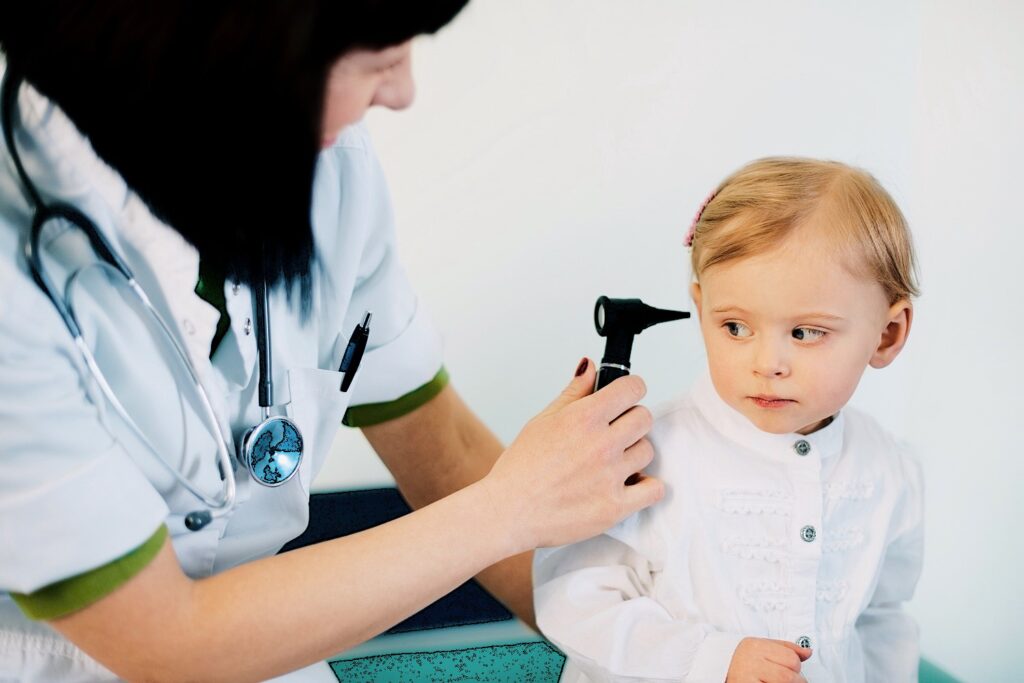Ear infections are among the most common childhood illnesses, particularly in infants and toddlers. Though often mild, if left untreated, they can lead to discomfort, hearing problems, and in rare cases, more serious complications. Pediatric care plays a crucial role in early diagnosis and proper treatment, helping to manage symptoms effectively and prevent long-term issues. Understanding how to identify an ear infection early can lead to quicker recovery and fewer disruptions in your child’s health and happiness.
What Is an Ear Infection?
An ear infection, or otitis media, occurs when fluid builds up behind the eardrum and becomes infected. This usually follows a cold, throat infection, or upper respiratory illness. The eustachian tubes in young children are shorter and more horizontal than in adults, which makes it easier for bacteria or viruses to reach the middle ear.
There are three main types:
- Acute otitis media (AOM): A painful infection where fluid builds up behind the eardrum.
- Otitis media with effusion (OME): Fluid remains in the ear after the infection subsides, but without signs of infection.
- Chronic otitis media with effusion: Persistent fluid in the middle ear even without infection, which can affect hearing.
Common Signs of Ear Infection in Babies 5
Babies and toddlers often can’t explain how they feel, so it’s important to watch for signs of discomfort. The most common symptoms include:
- Tugging or pulling at the ear
- Fussiness or frequent crying
- Trouble sleeping
- Fever (especially in younger children)
- Fluid draining from the ear
- Difficulty hearing or not responding to sounds
- Loss of balance
If your child exhibits several of these symptoms, especially after a cold or respiratory illness, it’s a good idea to have their ears checked by a pediatrician.
What Causes Ear Infections?
Several factors increase the risk of developing an ear infection:
- Colds and respiratory infections: These can spread to the middle ear.
- Bottle feeding while lying down: Increases fluid buildup in the ear.
- Allergies: Can cause inflammation and fluid accumulation.
- Exposure to cigarette smoke: Irritates the eustachian tubes and makes infections more likely.
- Daycare attendance: Increases exposure to infections from other children.
- Family history: Genetics can play a role in susceptibility.
When to See a Doctor
Not all ear infections require medical treatment, but you should consult a doctor if:
- Symptoms last more than a day
- Your child is under six months old and shows signs of infection
- There is ear discharge or fluid
- Your child appears very ill, has a high fever, or is extremely irritable
Prompt medical attention ensures your child gets the care they need, whether it’s watchful waiting or treatment.
Ear Infection Treatments for Babies and Children
In many cases, ear infections clear up on their own without antibiotics. If your child is not in severe pain or has a mild fever, your doctor may suggest a wait-and-see approach along with over-the-counter pain relievers. This helps avoid antibiotic resistance, which can occur when antibiotics are used unnecessarily.
Babies Under 6 Months
Infants younger than six months are usually prescribed antibiotics. At this age, their immune systems are still developing, and complications from untreated infections can be more serious. Because of limited research on alternative approaches for this age group, doctors typically don’t delay treatment.
Children Aged 6 Months to 2 Years
In this age group, treatment depends on the severity of the infection. If symptoms are mild and the child is otherwise healthy, your pediatrician may suggest observing them for 2–3 days before starting antibiotics. If symptoms worsen or don’t improve, antibiotic therapy may be initiated.
Children Over 2 Years
Older children often recover from mild ear infections without antibiotics. Pain can be managed with medications like acetaminophen or ibuprofen. If symptoms don’t improve in a couple of days, then antibiotics may be prescribed.
Recurrent Ear Infections
Children who experience multiple ear infections per year may need a more long-term solution. A common treatment is the insertion of small tubes into the eardrum to allow air flow and prevent fluid buildup. These tubes can reduce the frequency and severity of future infections.
How to Prevent Ear Infections
While not all ear infections are preventable, you can lower the risk by:
- Breastfeeding instead of bottle-feeding
- Holding your child upright while feeding
- Avoiding cigarette smoke exposure
- Keeping your child up to date with vaccinations
- Practicing good hygiene to prevent colds and infections
Trust Neighbors Emergency Center – Open 24/7
When your child is sick or in pain, you don’t want to wait. Neighbors Emergency Center is open 24/7 to provide compassionate, expert pediatric care without long wait times. Whether it’s an ear infection, high fever, or signs of something more serious, our board-certified physicians are here around the clock to keep your family safe and healthy.
Your child’s health deserves fast, friendly, and dependable care, any time, day or night.

